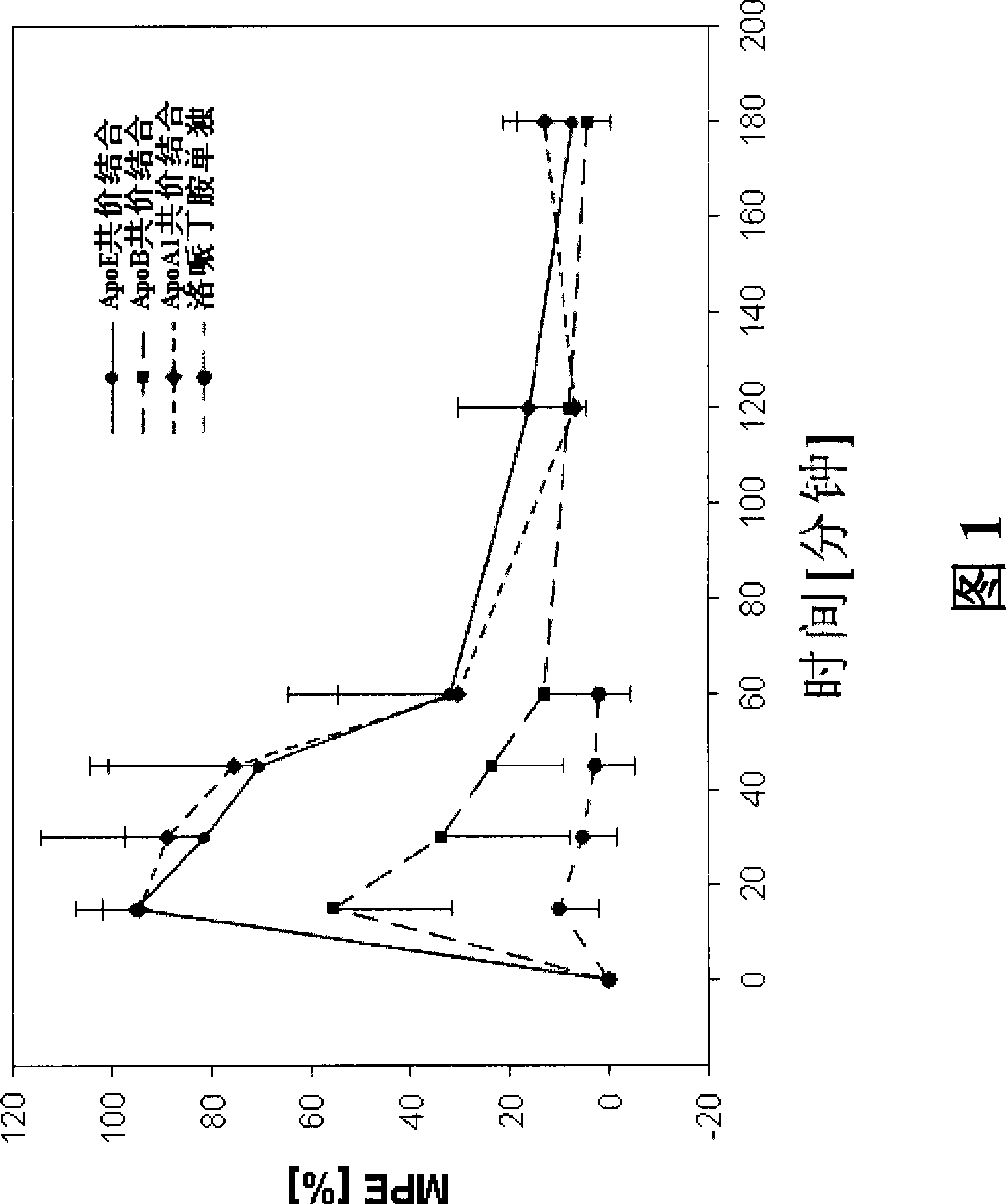Agent-enriched nanoparticles based on hydrophilic proteins
A nanoparticle and protein technology, applied in the field of nanoparticles loaded with active agents, can solve the problems of average particle size increase, toxicity effects, particle efficacy and side effects, etc.
- Summary
- Abstract
- Description
- Claims
- Application Information
AI Technical Summary
Problems solved by technology
Method used
Image
Examples
Embodiment
[0041] To prepare HSA nanoparticles by desolvation, 200 mg of human serum albumin was dissolved in 2.0 ml of 10 mM NaCl solution, and the pH of the solution was adjusted to 8.0. 80 ml of ethanol was added dropwise to the solution at a rate of 1.0 ml / min under stirring. This desolvation step resulted in the formation of HSA nanoparticles with an average particle size of 200 nm.
[0042] The nanoparticles were stabilized by adding 235 μl of 8% glutaraldehyde solution. After incubation for 12 hours, the nanoparticles were purified by three centrifugations and redispersion first in purified water followed by PBS buffer (pH 8.0).
[0043] To activate the nanoparticles, 500 μl of the crosslinker NHS-PEG3400-Mal solution (60 mg / ml in PBS buffer 8.0) was added to 2.0 ml of the nanoparticle suspension (20 mg / ml in PBS buffer 8.0) under stirring middle) and incubated at room temperature for 1 hour. After the incubation period, the PEG-modified nanoparticles were purified using purifi...
PUM
| Property | Measurement | Unit |
|---|---|---|
| molecular weight | aaaaa | aaaaa |
| molecular weight | aaaaa | aaaaa |
| molecular weight | aaaaa | aaaaa |
Abstract
Description
Claims
Application Information
 Login to View More
Login to View More - R&D
- Intellectual Property
- Life Sciences
- Materials
- Tech Scout
- Unparalleled Data Quality
- Higher Quality Content
- 60% Fewer Hallucinations
Browse by: Latest US Patents, China's latest patents, Technical Efficacy Thesaurus, Application Domain, Technology Topic, Popular Technical Reports.
© 2025 PatSnap. All rights reserved.Legal|Privacy policy|Modern Slavery Act Transparency Statement|Sitemap|About US| Contact US: help@patsnap.com

